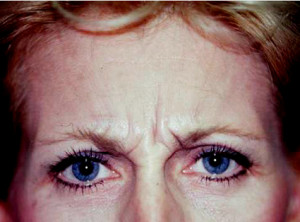
In the September issue of the journal Plastic and Reconstructive Surgery, an article was published entitled ‘Efficacy and Safety of Botulinum Toxin Type A in the Treatment of Glabellar Lines: A Meta-Analysis of Randomized, Placebo-Controlled, Double Blind Trials’. In this paper the authors looked at seven studies comprising nearly 1500 patients to assess the safety and effective endpoint (dose) of botulinum toxin type A for treating glabellar lines. The seven studies included were all randomized, placebo-controlled and double blind trials that used an injection dose of 20 units. Their findings show the the botulinum toxin injected patients had much better improvement in their glabellar wrinkles than the placebo group but, interestingly, the same rate of adverse events.
The incredible popularity and use of neuromuscular modulators in the face using botulinum toxin injections over the past nearly two decades is a statement in and out itself. It is a testament alone that they must be fairly effective and incredibly safe. This study, which amassed well conducted other studies supports what widespread clinical use has shown.
Dr. Barry Eppley
Indianapolis, Indiana


